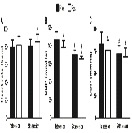Use of low volume, high effort resistance training to manage blood pressure in hypertensive patients inside a public hospital: a proof of concept study

Accepted: 19 December 2020
HTML: 8
All claims expressed in this article are solely those of the authors and do not necessarily represent those of their affiliated organizations, or those of the publisher, the editors and the reviewers. Any product that may be evaluated in this article or claim that may be made by its manufacturer is not guaranteed or endorsed by the publisher.
Authors
Physical exercise has been shown to have an important role in the prevention and treatment of arterial hypertension. However, the general exercise recommendations are time consuming, which might be detrimental to exercise adoption. Based on this, minimal doses of exercise have been suggested as an alternative approach and this report investigates the feasibility and effects of low volume and high effort resistance training for hypertensive patients in a hospital setting. This is a pilot non-randomized prospective study where 15 sedentary hypertensive patients (11 women and 4 men) performed 24 resistance training sessions over 12 weeks at a public hospital. The resistance training sessions consisted of two sets of four exercises, with a rest interval of two minutes between sets. Systolic blood pressure (SBP) and diastolic blood pressure (DBP) were measured 10 minutes before and 10 minutes after each training. No injuries or intercurrence were reported during the study. SBP decreased significantly when compared the first and last sessions, when the measures were performed at rest (152 ± 16 mmHg vs. 122 ± 9 mmHg vs, p<0.05), and after (137 ± 13 mmHg vs. 115 ± 5 mmHg, p<0.05) the resistance training session. Similarly, DBP also decreased significantly when the values from the last session were compared with the first session, when measured at rest (83 ± 14 mmHg vs 73 ± 9 mmHg, p<0.05). Low volume and high effort resistance training seems to be a feasible non-pharmacological strategy to help controlling blood pressure in hypertensive patients within a hospital.
How to Cite
PAGEPress has chosen to apply the Creative Commons Attribution NonCommercial 4.0 International License (CC BY-NC 4.0) to all manuscripts to be published.

 https://doi.org/10.4081/ejtm.2021.9547
https://doi.org/10.4081/ejtm.2021.9547



